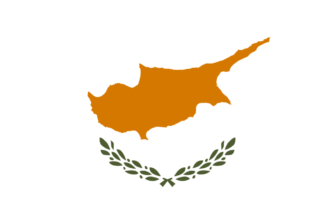Vietnam has a complicated history; in the twentieth century alone it experienced several wars, armed conflicts and changes of political regime. This long struggle for independence is reflected in its flag with symbols typical of most countries with a socialist regime.
This is what the flag of Vietnam looks like:

History of Origins
The first flag (in the modern sense of the word) appeared in Vietnam in the early 19th century thanks to Emperor Nguyen Gia Long, who united the northern, southern and central parts of the state. The flag was a yellow cloth with a red circle in the middle.

By the middle of the 19th century, the flag had changed: the colors remained the same, but the circle was replaced by three horizontal stripes – a reference to one of the eight trigrams of the “Book of Changes”, the basis of Taoism. In addition, it is believed that the three red stripes symbolized South, North and Central Vietnam, united in a single empire.

At the end of the nineteenth century, Vietnam was under the protectorate of France. The southern region was entirely under the control of the French, while in the northern and central regions there were two parallel governments. Thus, until the beginning of the 20th century, there were three flags in Vietnam at the same time: the French, the Vietnamese (imperial) and the flag of the French protectorate.

At the beginning of the twentieth century, the flag changed again, and from 1920 to 1945 it had one wide red stripe instead of three narrow ones. During World War II, Vietnam was briefly occupied by Japanese troops, who drove the French out of the country. As a result, from March to August 1945, the flag again acquired three stripes, the center one of which was “torn” in the middle.

After the end of World War II, the French tried to return to Vietnam, but met with active resistance from the military-political organization Vietminh, created back in 1939 to fight for the independence of the state. It was then that the modern version of the Vietnamese flag first appeared – a red cloth with a yellow five-pointed star. Shortly thereafter, the country was divided into two parts: southern and northern.

Until unification in 1976, South Vietnam used the traditional yellow flag with three red stripes. After the end of the Vietnam War, 1969 to 1976, the provisional revolutionary government used a red and blue flag with a yellow star. In North Vietnam all that time there was a red “communist” flag with a yellow star. It subsequently became the common symbol of Vietnam and underwent only one change – in 1955 the star was slightly smaller and its rays became sharper (similar to the one adopted in the Soviet Union).

Description
The modern flag is a red cloth of rectangular shape. The traditional aspect ratio is 3 to 2. In the center of the flag is one big five-pointed star of bright yellow color.

Colors
Throughout history, only two colors have been used in the Vietnamese flag: red and yellow. The only exception is the banner of the provisional revolutionary government of the Republic of South Vietnam – they added a wide blue stripe to the communist banner of North Vietnam.
The modern flag is made in the traditional color scheme.
Meaning of the colors of the flag
Vietnam is one of the few states that still adhere to the socialist model, as a consequence, its banner reflects the corresponding symbolism. Red is the color of the revolution and the blood shed in the struggle for freedom and independence, yellow symbolizes the Vietnamese people themselves (in some sources one finds a direct reference to the color of the skin).
The star signifies the victory of the socialist party and the unity of the five major classes: peasants, workers, intellectuals, military and youth.
General information about Vietnam
| Official language | Vietnamese |
| Capital | Hanoi |
| Territory | 331,210 km2 |
| Population | 92,477,857 people |
| Currency | dong |
| Phone Code | +84 |










I visited Vietnam last year and was captivated by the vibrant red flag with its golden star. It symbolizes unity and independence. One day, I saw locals proudly waving it during a festival, and it really struck me how much history and pride is wrapped up in that flag.
I absolutely love the Flag of Vietnam! It’s so vibrant and represents the rich culture and history. I remember visiting Vietnam and seeing the flag everywhere during the Tet Festival. The energy was incredible, and I felt so connected to the spirit of the country! What a beautiful symbol!